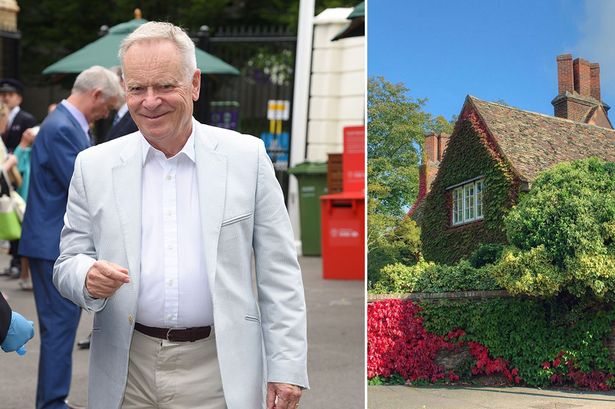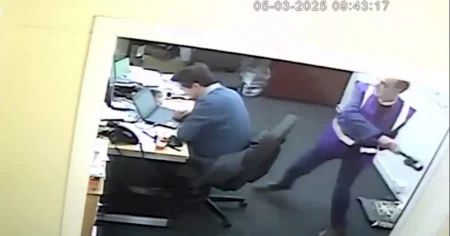The theft of valuable lead sculptures from The Old Vicarage, a historic 17th-century house nestled in the idyllic village of Grantchester, highlights a growing concern across the UK: the escalating threat of metal theft targeting heritage sites. This incident transcends mere material loss; it represents a profound assault on cultural heritage, stripping away irreplaceable pieces of history and potentially damaging the very fabric of these treasured buildings. The sculptures, integral to the aesthetic and historical narrative of The Old Vicarage, are now at risk of being reduced to mere scrap metal, a stark illustration of the crass motivations driving this type of crime. The thieves, driven by the prospect of quick financial gain, demonstrate a disregard not only for the law, but also for the artistic and historical significance of their plunder. The potential for these irreplaceable works of art to be melted down for a paltry sum underscores the urgent need for increased vigilance and more robust protective measures.
The vulnerability of historic properties like The Old Vicarage underscores a systemic issue: the inadequacy of current safeguards against metal theft. The relative ease with which thieves can target these often isolated locations, coupled with the high value of metals like lead and copper, creates a potent combination that fuels this illicit trade. The Old Vicarage, steeped in history and literary associations, represents a particularly poignant example of this vulnerability. Its connection to the renowned poet Rupert Brooke, who resided there in the early 20th century, adds another layer of significance to the loss. The stolen sculptures, likely witnessing decades of history unfold within the grounds of the vicarage, are now severed from their context, their stories silenced by the opportunistic act of theft. This incident serves as a stark reminder of the fragility of our shared heritage and the constant threat posed by those who prioritize profit over preservation.
The impact of metal theft extends beyond the immediate financial loss and the aesthetic damage inflicted on historic buildings. The removal of lead, in particular, can have devastating structural consequences. Lead often plays a crucial role in protecting the integrity of roofs and other architectural features, preventing water ingress and subsequent decay. Its theft leaves these buildings exposed to the elements, accelerating deterioration and potentially leading to costly and complex repairs. The ripple effect of this crime can impact the wider community, potentially disrupting activities held at the affected property and diverting resources away from essential preservation projects. In the case of The Old Vicarage, the theft could disrupt the tranquil atmosphere of this historic site, impacting the experience of visitors and potentially compromising its future as a place of historical and literary interest.
The relatively low risk coupled with the potential for substantial financial reward creates a perverse incentive for metal thieves. While the amount received for scrap metal might seem modest, the cumulative effect of multiple thefts can generate significant profits for organized criminal networks. The ease with which stolen metal can be disguised and sold through unscrupulous scrap yards further complicates law enforcement efforts. This underscores the need for greater regulation and oversight within the scrap metal industry, including stricter identification requirements for sellers and enhanced tracking of metal transactions. Closing loopholes that allow stolen metal to enter the legitimate market is crucial to disrupting the cycle of theft and discouraging future criminal activity.
Addressing the pervasive issue of metal theft requires a multifaceted approach. Increased security measures at vulnerable sites, including improved lighting, CCTV surveillance, and alarm systems, can act as a deterrent. However, technology alone is not enough. Community engagement plays a vital role in protecting our shared heritage. Encouraging vigilance among residents and promoting reporting of suspicious activity can significantly aid law enforcement efforts. Public awareness campaigns can also educate individuals about the cultural and historical significance of these sites, fostering a sense of shared responsibility for their protection. Collaboration between law enforcement, heritage organizations, and local communities is essential to creating a robust defense against metal theft and preserving these irreplaceable treasures for future generations.
The theft of the lead sculptures from The Old Vicarage serves as a wake-up call, highlighting the urgent need for a concerted effort to protect our vulnerable heritage sites. This incident transcends the monetary value of the stolen items; it represents a loss of historical memory and a blow to the cultural fabric of the community. By strengthening security measures, increasing public awareness, and implementing stricter regulations within the scrap metal industry, we can work together to safeguard these precious assets and ensure that future generations can continue to appreciate the rich history they embody. The Old Vicarage, with its literary connections and historical significance, deserves to be preserved, not plundered. This act of theft serves as a stark reminder of the constant vigilance required to protect our shared heritage from those who would exploit it for personal gain.














